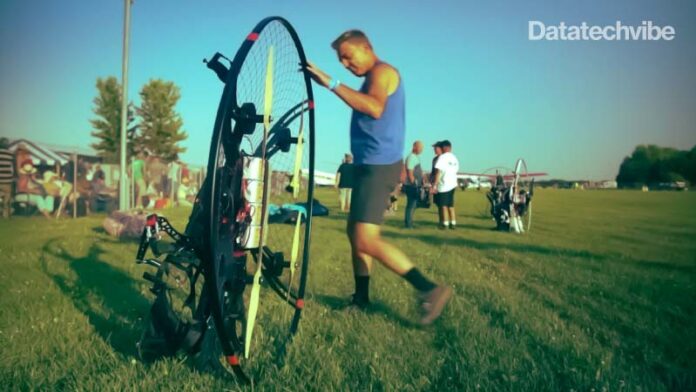The Air Force’s Agility Prime program awarded a phase I small business technology transfer (STTR) research contract to Jump Aero and Caltech to create an electronic parachute powered by machine learning (ML) that would allow the pilot to recalibrate the flight controller in midair in the event of damage.
‘The electronic parachute is the name for the concept of implementing an adaptive/machine-learned control routine that would be impractical to certify for the traditional controller for use only in an emergency recovery mode — something that would be switched on by the pilot if there is reason to believe that the baseline flight controller is not properly controlling the aircraft (if, for example, the aircraft has been damaged in midair)’, Carl Dietrich, founder and president of Jump Aero Incorporated, told Avionics International.
This technology was previously difficult to certify because of the need for deterministic proof of safety within these complex systems. The research was sparked when the Federal Aviation Administration certified an autonomous landing function for use in emergency situations which created a path for the possible certification of electronic parachute technology, according to Jump Aero.
The machine-learned neural network can be trained with non-linear behaviours that occur in an aircraft in the presence of substantial failures such as those generated by a bird strike, Dietrich said. Once trained with these simulated failures, the controller could select the appropriate control laws.
Also Read: The Internet of Things: Top Seven IoT Influencers to Follow
‘The neural network would learn new operating limits and effector gains mapping in the presence of these simulated failures’, Dietrich said. ‘The adaptive aspect of the controller would in effect select the appropriate pre-learned control laws that the DNN discovered through the training of the simulated failures. The goal is to optimally map the original command structure of the baseline controller onto the new controller with the fundamental limitations of the new plant model — so the aircraft response would be as close as possible to what the pilot expects — thereby improving the probability of a safe landing.’
This technology is still in early-stage work, Dietrich said, however, Caltech has created similar adaptive controllers which could help in the development of the electronic parachute.
‘This particular research could lead to the first application of an adaptive/ML controller to a piloted aircraft in the form of a recovery function (or ‘electronic parachute’) if it is carried forward through Phase III’, Dietrich said.
The electronic parachute could be trailed on Jump Aero’s electronic vertical take-off and landing (eVTOL) aircraft, JAI eVTOL, which is still within the preliminary design stage, Dietrich said. Jump Aero was launched in January 2020 as a solution for first responders.
‘We are starting to test subsystems for the demonstrator and we are in the preliminary design stage of the full-scale aircraft’, Dietrich. ‘If we are awarded a Phase II STTR contract, we would expect to demonstrate this electronic parachute technology on a subscale demonstration aircraft where we can simulate failures and (hopefully) successful recovery at low cost/risk.’
(With input from agencies)









